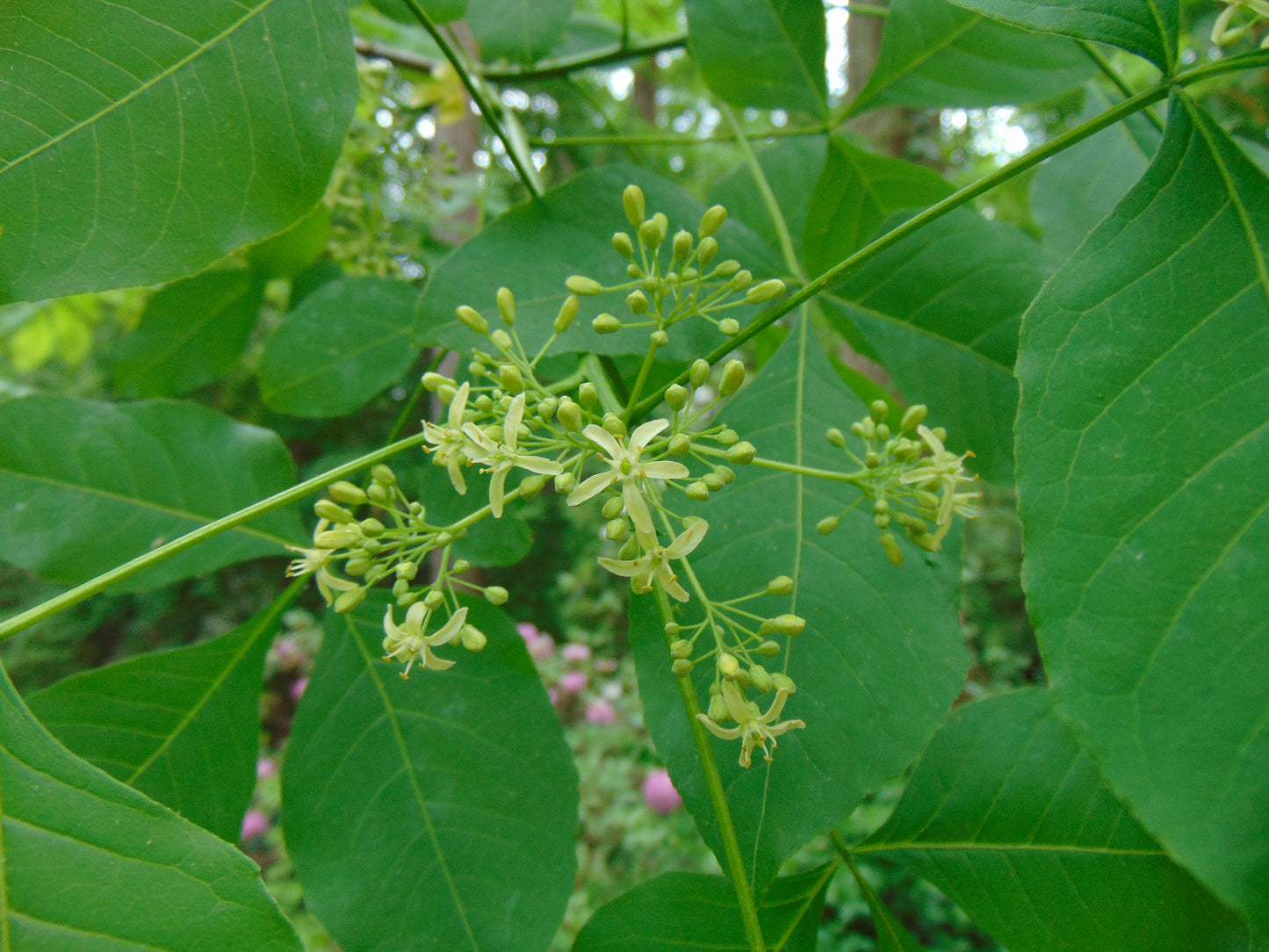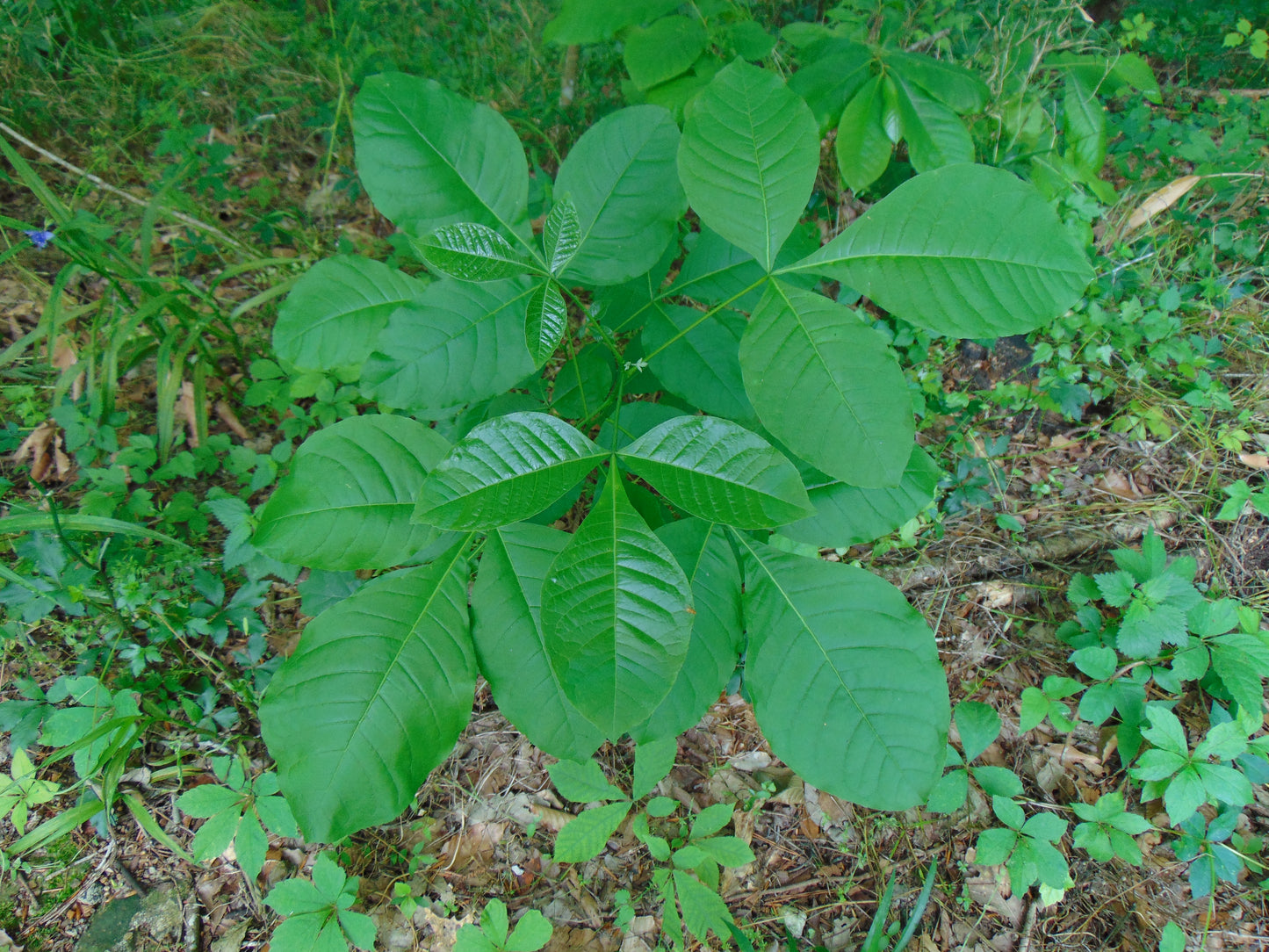Floridaseeds
Hop Tree Wafer Ash Ptelea trifoliata 100 Seeds
Hop Tree Wafer Ash Ptelea trifoliata 100 Seeds
Couldn't load pickup availability
Ptelea trifoliata, commonly known as common hoptree or wafer ash, is a deciduous shrub or small tree native to North America, particularly found in eastern and central regions of the United States and parts of Canada. Here's a description of its key characteristics:
Appearance: Common hoptree typically grows to a height of 10-15 feet (3-4.5 meters), although it can occasionally reach up to 25 feet (7.5 meters). It has a spreading, irregularly rounded crown and a generally open, airy growth habit. The bark is light gray and smooth on young stems, becoming rougher and fissured with age.
Leaves: The leaves are compound, consisting of three leaflets, giving rise to the species name "trifoliata." Each leaflet is elliptical to ovate, with serrated margins, and measures 1-3 inches (2.5-7.5 cm) in length. The leaves are dark green above and paler beneath, turning yellow in the fall.
Flowers: Common hoptree produces small, inconspicuous greenish-yellow flowers in late spring to early summer. The flowers are clustered in terminal panicles, and while individually not showy, they collectively give the tree a delicate, airy appearance.
Fruit: The fruit of Ptelea trifoliata is a distinctive, papery samara (winged seed) resembling a wafer, hence the common name "wafer ash." These fruits persist into the fall and often remain on the tree throughout the winter, providing visual interest.
Habitat: This species typically grows in a variety of habitats, including dry upland woods, prairies, thickets, and stream banks. It is adaptable to a range of soil types but prefers well-drained, alkaline soils.
Ecological Importance: Common hoptree is valued for its role in supporting wildlife, attracting butterflies and other pollinators with its flowers and providing food for birds and small mammals with its seeds.
Cultural Uses: Historically, various parts of the common hoptree have been used for medicinal purposes by indigenous peoples. The dried fruits were also once used as a hop substitute in beer-making, hence the common name "hop tree."
Landscape Use: Common hoptree is occasionally cultivated as an ornamental shrub or small tree in gardens and landscapes, prized for its attractive foliage, interesting fruits, and low maintenance requirements. Hardy in zones 6-9.
Growing Instructions
The seeds have a period of dormancy. They can be planted outdoors in the fall or winter for spring germination or they can be cold stratified to simulate winter conditions and to break their dormancy at any time of the year.
- Place the seeds in a plastic bag and seal it. Store the bag in a refrigerator for 3 months.
- The seeds like moist, well-drained soil. Fill a pot with a mixture of half potting soil and half sand or vermiculite.
- Sow the seeds on the soil and cover them with a thin layer of soil.
- Water the container.
- Put the pot in a warm, sunny area.
- Water the pot regularly so that the soil is moist but not wet.
- The seedlings can be transplanted when they are a few inches tall.












